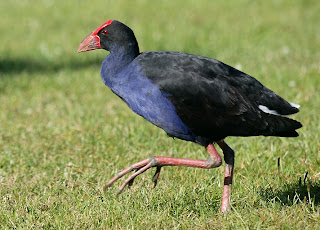Over the last ten years, I have been on many aeroplanes and have had the somewhat dubious pleasure of visiting a wide range of airports - from Kavala in northern Greece to Knock in northern Ireland and from LAX (Los Angeles), California to Durban, South Africa. During these travels, I have been making mental notes about airport security and have been amazed to find so many variations and so many discrepancies.
Perhaps I am naive, but I have this idea that airport security should follow agreed international standards, enforced through rigorous inspection and licensing. Nobody likes security checks but in a world that has been blighted by inhuman terrorist attacks, travellers have a right to expect that airport security checks will, as far as possible, guarantee their safety.
Regarding our recent trip to New Zealand, we were allowed to take bottles of water on our internal Jetstar flight from Auckland to the South Island. Why? If liquids are a security problem on international flights, why are they allowable on internal flights? At Dubai, I did not have to take my laptop from my carry on bag whereas at virtually every other airport in the world laptops have to be scanned separately. In fact the guy at the X-ray conveyor belt was insistent that the laptop should stay in the bag.
Also at Dubai, when we were "airside", we bought some water for the onward flight to Brisbane only to find security people at the boarding gate insisting that we binned these expensive bottles. Interestingly, there wasn't an equivalent process when we returned to Dubai three weeks later and boarded our connecting plane to Manchester.
At some airports, they make you take off your shoes as a matter of course, at others they don't. Before passing through some X-ray gates you are asked to remove watches and belts with buckles but at others you aren't and yet when you pass through those gates the alarms fail to sound. Why would that be? Are the X-ray gates sometimes purely for show?
Once at Treviso airport near Venice, I accidentally went through security with an umbrella in my hand luggage but it wasn't detected even though the security signage insisted that umbrellas would be confiscated. At the same security check, a bottle of water was removed from my bag but the second bottle of water - at the bottom of my bag - was missed.
Our daughter, Frances, tells me that security was extremely lax at the airport in Birmingham, Alabama even though she was connecting with a transatlantic flight in Atlanta. Her hand luggage was not scanned and the X-ray gate was redundant so she boarded her later flight to Manchester without being screened at all.
I could go on and on about this subject. But finally I'd just like to make a point about water. Generally speaking, travellers are not allowed to take bottles of water "airside". You have to throw your bottles away and then buy new bottles of water in the duty free shopping zone. Invariably, this water is heavily overpriced. At Auckland Airport we paid $4NZ (£2) for a 500ml bottle and once at Shannon Airport in Ireland there was no water for sale anywhere. When travelling by air - especially long distance - it is vital to be well-hydrated. The small amounts of liquid provided by cabin staff during flights are often insufficient. In my view, if we are required to throw water away before passing through security, we should be provided with free or very cheap bottles of water when "airside". Besides, there are surely quick tests that could check the contents of a bottle so that travellers would not be required to needlessly throw their water away.
Dear reader - have you got any tales or thoughts of your own about airport security?

































